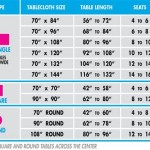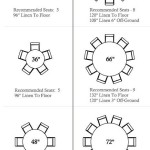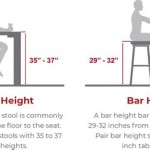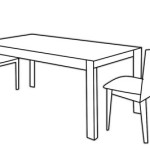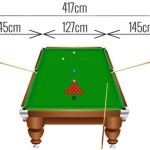What Style Is A Trestle Table?
The trestle table, a utilitarian yet often aesthetically pleasing piece of furniture, isn't confined to a single, rigid style. Instead, it represents a structural concept manifested across a spectrum of designs. Understanding the "style" of a trestle table requires examining its construction, materials, and the historical inspiration it draws from.
Fundamentally, a trestle table is defined by its support system. Rather than legs directly attached to the tabletop corners, it employs trestles – separate, often A-shaped or X-shaped supporting frames – to bear the weight of the tabletop. This design allows for flexibility in tabletop size and shape, and often, easy disassembly for storage or transportation. The aesthetic result, however, depends on the specific execution of this core structural principle.
Historical Influences and Period Styles
The trestle table boasts a long and varied history, influencing and being influenced by diverse period styles. Its origins can be traced back to the medieval era, where practicality and ease of assembly were paramount. These early trestle tables were often simple, robust constructions made primarily of wood, reflecting the available resources and construction techniques of the time. The trestles themselves were typically straightforward A-frames or X-frames, sometimes connected by a central stretcher for added stability. The tabletop, frequently made of thick planks, would simply rest upon the trestles, secured by its own weight and sometimes by pegs or wedges.
As time progressed, the trestle table evolved alongside prevailing furniture styles. During the Renaissance and subsequent periods, trestle tables became more ornate, incorporating carved details, turned legs, and richer materials. The simple A-frame might be replaced by more elaborately shaped trestles with scrolling patterns and decorative elements. Tabletops might be inlaid with marquetry or crafted from finer woods like walnut or cherry. These tables were still functional, but they also served as a symbol of status and refinement.
The Arts and Crafts movement in the late 19th and early 20th centuries saw a resurgence of interest in handcrafted furniture and simple, honest designs. Trestle tables from this era often feature clean lines, exposed joinery, and a focus on the natural beauty of the wood. The trestles might be subtly tapered or feature mortise-and-tenon joints, showcasing the skill of the craftsman. This style emphasized functionality and durability over excessive ornamentation.
Even in more modern periods, the trestle table has maintained its relevance, adapting to contemporary design sensibilities. Mid-century modern trestle tables often feature streamlined forms, minimalist details, and the use of materials like steel or laminate alongside wood. These tables emphasize clean lines and a sense of lightness, reflecting the design principles of the era.
Materials and Their Impact on Style
The materials used in constructing a trestle table significantly influence its overall style. Wood, being the most traditional material, offers a wide range of possibilities depending on the species and finish. Rustic trestle tables often utilize reclaimed wood with a rough-hewn texture and natural imperfections, contributing to a sense of age and character. Conversely, more formal trestle tables might feature polished hardwoods like mahogany or cherry, showcasing a smooth, refined surface and a rich, deep color.
Metal can be used to create trestles that are either sleek and modern or industrial and robust. Steel trestles, often powder-coated or brushed, can provide a contemporary look, while cast iron trestles evoke a more vintage or industrial aesthetic. The combination of wood and metal can also create interesting contrasts and visual appeal. For example, a wooden tabletop paired with steel trestles can achieve a balance between rustic warmth and modern industrial chic.
The tabletop material also plays a crucial role in defining the style of the trestle table. Glass tabletops create a sense of lightness and transparency, highlighting the trestle base. Stone tabletops, such as marble or granite, lend a feeling of luxury and durability. Laminate tabletops offer versatility in terms of color, pattern, and resistance to scratches and stains, making them suitable for a variety of styles.
Textiles also contribute if the trestle table is designed to hold a display or serving surface. Tablecloths, runners, and placemats are used to dress a table and can dramatically alter the perceived style of the trestle table beneath. A damask cloth transforms the table to a formal look, while a burlap runner gives a rustic or country feel.
Construction Details and Design Elements
Beyond the materials, specific construction details and design elements contribute significantly to the style of a trestle table. The shape and design of the trestles themselves are a key factor. Simple A-frames or X-frames offer a straightforward, functional aesthetic, while more elaborate trestles with curved legs, carved details, or decorative metalwork create a more ornate or formal appearance.
The joinery techniques used to connect the trestles and the tabletop also influence the overall style. Exposed mortise-and-tenon joints, dovetail joints, or butterfly joints can showcase the craftsmanship and add a touch of rustic charm. Conversely, concealed joinery creates a cleaner, more minimalist look. The method of attaching the tabletop to the trestles also affects the visual impression. The tabletop might simply rest on the trestles, or it might be secured with screws, bolts, or other fasteners. The visibility of these fasteners can either be minimized for a seamless look or intentionally emphasized as a design detail.
The edge profile of the tabletop is another subtle detail that can significantly impact the style. A straight edge provides a clean, modern look, while a beveled edge adds a touch of sophistication. A live edge, which preserves the natural contours of the wood, creates a rustic, organic feel. The use of aprons—horizontal pieces of wood that connect the tabletop to the trestles—can also influence the style. Aprons can be plain or decorative, and they can either conceal or highlight the connection between the tabletop and the trestles.
Considerations such as the shape of the tabletop – whether rectangular, round, oval, or square – further contribute to the overall aesthetic. A round trestle table often has more of a casual or communal feel, while a rectangular one can lend itself to a more formal setting. The finish applied to the wood or metal also plays a crucial role in defining the style. A natural oil finish highlights the beauty of the wood grain, while a painted finish offers the opportunity to introduce color and create a more contemporary look. Distressed finishes, which mimic the wear and tear of age, contribute to a rustic or antique aesthetic.
The presence or absence of stretchers connecting the trestles affects both the structural stability and the aesthetic appearance. Stretchers provide additional support and prevent the trestles from wobbling, but they can also add visual clutter. Some trestle tables feature a single stretcher running along the center, while others have multiple stretchers connecting the legs. The design of the stretchers – whether straight, curved, or turned – also contributes to the overall style.
Ultimately, the "style" of a trestle table is a composite result of its historical inspiration, its materials, and its construction details. It is a versatile design that can be adapted to suit a wide range of tastes and settings, from rustic farmhouses to modern lofts. Understanding the factors that influence its style allows for a more informed appreciation and selection of this enduring furniture form.

36 Stunning Trestle Tables You Ll Love Setting For Four Interiors

Trestle Table Vs Leg The Pros And Cons Timber To

Champlain Reclaimed Oak Trestle Table Saltwoods

Buy Hand Made Trestle Table To Order From Urban Forest Furniture Custommade Com

Buy Tess 78 Inch Dining Table Extendable Leaf Trestle Base Natural Brown By Casagear Home Farmhouse Style

Double Trestle Farm Table Farmhouse Furniture Dining

Buy Tess 78 Inch Dining Table Extendable Leaf Trestle Base Natural Brown By Casagear Home Farmhouse Style

How To Build A White Oak Trestle Table Dining Woodworking

Harding Craftsman Style Trestle Table Countryside Amish Furniture

Shaker Trestle Table



